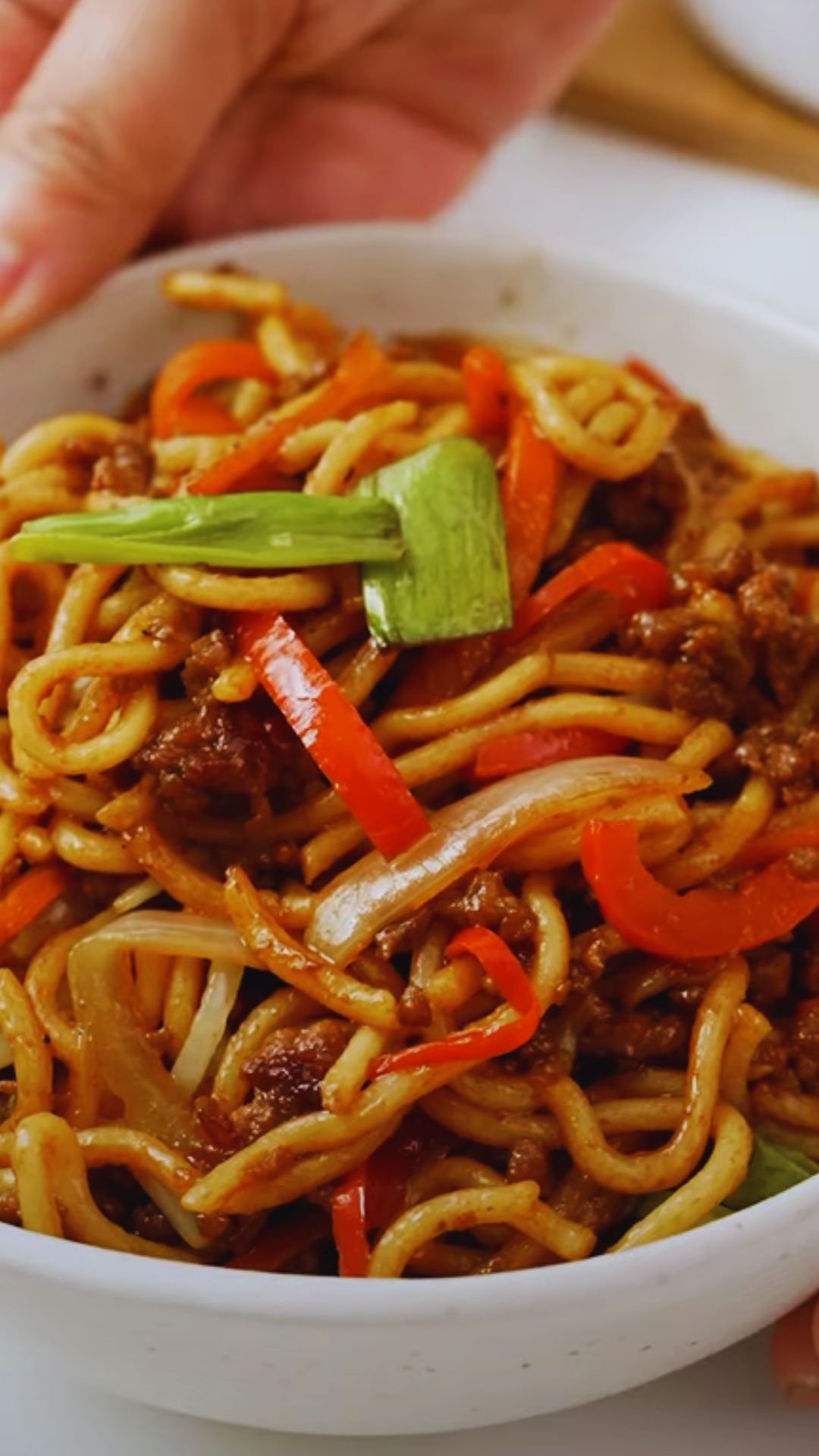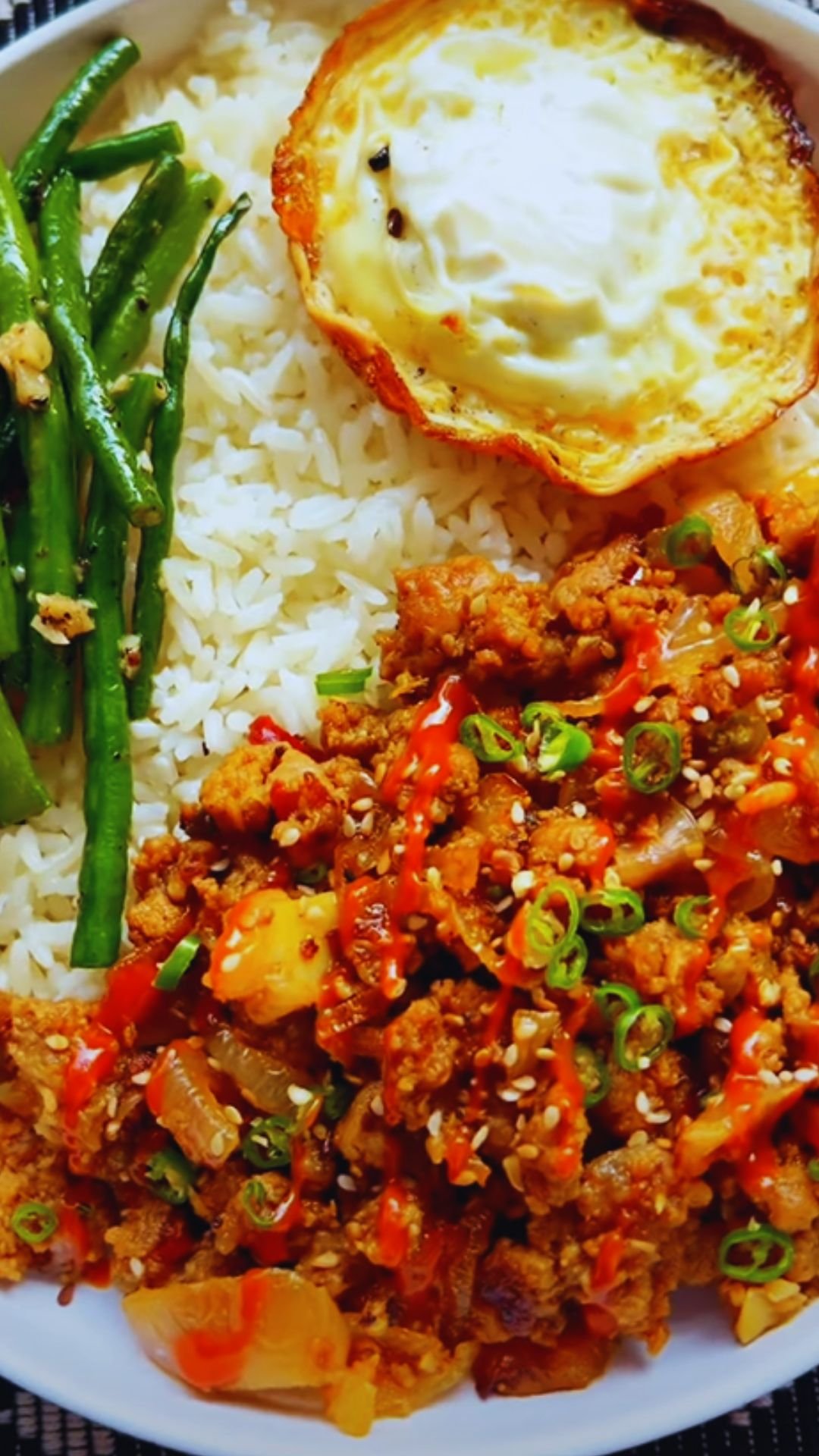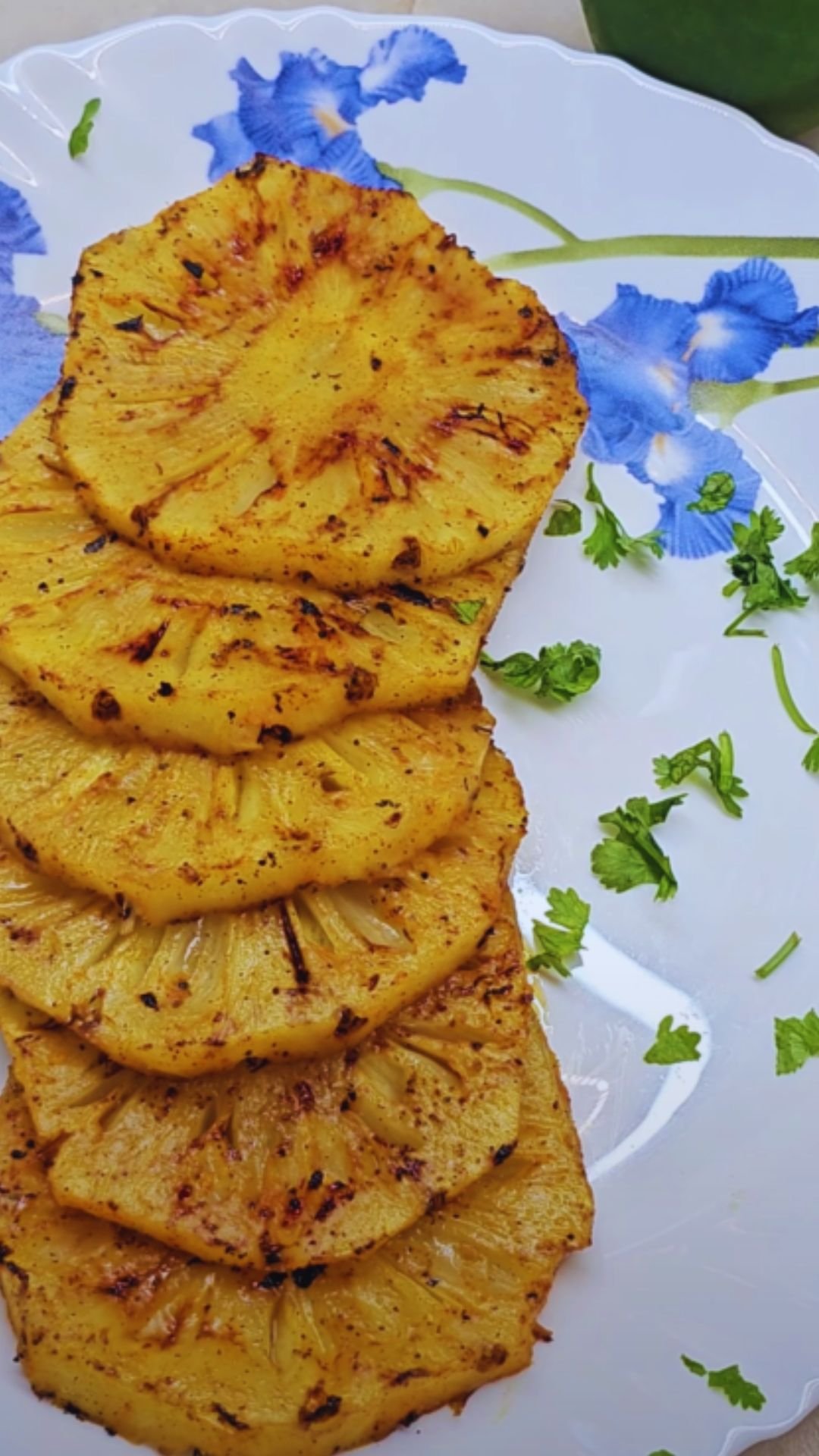Have you ever stood in front of your refrigerator at 5:30 pm, wondering what on earth you’re going to make for dinner with that package of ground beef you forgot to defrost? I’ve been there more times than I care to admit. That’s why this Ground Beef Noodle Stir Fry has become my absolute lifesaver on busy weeknights. It’s quick, versatile, packed with flavor, and uses ingredients you probably already have in your pantry.
As someone who has tested and refined this recipe through countless dinner emergencies, I can promise you this: in just 30 minutes, you’ll have a delicious, balanced meal that will satisfy even the pickiest eaters at your table. The combination of savory ground beef, tender noodles, and crisp vegetables tossed in a rich, umami-packed sauce creates a dish that feels both comforting and exciting.
Let me show you how to create this weeknight wonder and arm you with all the variations and tips you’ll need to make it your own family favorite.
What Makes This Ground Beef Noodle Stir Fry Special?
What sets this stir fry apart from others is its perfect balance of convenience, nutrition, and incredible flavor. I’ve carefully crafted this recipe to deliver:
- A beautiful mixture of textures from the tender beef, al dente noodles, and crisp vegetables
- A sauce that’s both complex and adaptable to your taste preferences
- A complete meal in one pan (fewer dishes is always a win!)
- Endless customization opportunities to use what you have on hand
- A family-friendly dish that even kids will devour
Essential Ingredients
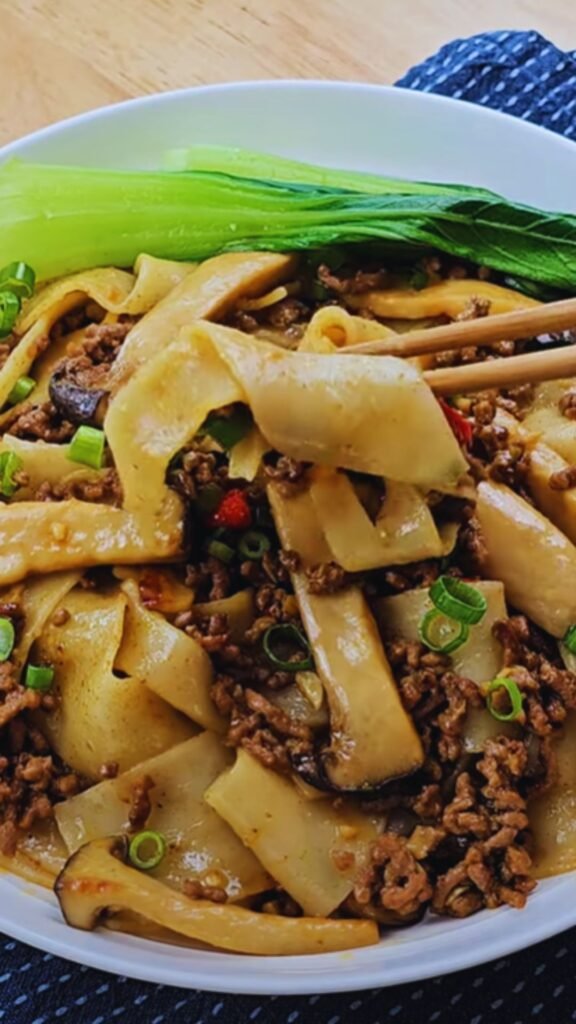
For this remarkable stir fry, you’ll need:
For the Stir Fry Base:
- 1 pound lean ground beef
- 8 ounces noodles (rice noodles, egg noodles, or even spaghetti work great)
- 3 cups mixed vegetables (my go-to combination is bell peppers, carrots, and snap peas)
- 3 cloves garlic, minced
- 1 tablespoon fresh ginger, grated
- 3 green onions, sliced (white and green parts separated)
- 2 tablespoons neutral cooking oil (like vegetable or canola)
For the Signature Stir Fry Sauce:
- 1/4 cup low-sodium soy sauce (or tamari for gluten-free option)
- 2 tablespoons oyster sauce
- 1 tablespoon brown sugar
- 1 tablespoon rice vinegar
- 1 teaspoon sesame oil
- 1/2 teaspoon crushed red pepper flakes (adjust to your spice preference)
- 1/4 cup beef or chicken broth
- 1 tablespoon cornstarch
Optional Garnishes:
- Sesame seeds
- Extra sliced green onions
- Chopped cilantro
- Crushed peanuts
- Lime wedges
Ingredient Substitutions and Variations
I understand that you might not have every ingredient in your pantry, so here are some tested substitutions that work beautifully:
| Ingredient | Substitution Options |
|---|---|
| Ground beef | Ground turkey, chicken, pork, or plant-based meat alternative |
| Rice noodles | Egg noodles, spaghetti, ramen, or even rice |
| Bell peppers | Broccoli, snow peas, baby corn, or any vegetable you have on hand |
| Oyster sauce | Hoisin sauce, additional soy sauce with a bit of sugar, or fish sauce |
| Fresh ginger | 1/2 teaspoon dried ginger powder |
| Rice vinegar | Apple cider vinegar or white vinegar |
| Cornstarch | All-purpose flour (use 2 tablespoons instead of 1) |
Preparation Method
The beauty of stir fry is its quick preparation. Here’s my method refined through countless weeknight dinners:
Step 1: Prepare Your Ingredients
Before turning on any heat, I always prepare everything because stir frying moves quickly:
- Cook noodles according to package directions until just al dente (slightly undercooked is ideal as they’ll finish cooking in the sauce). Drain, rinse with cold water to stop cooking, and set aside.
- Chop all vegetables into similarly sized pieces for even cooking.
- Mix all sauce ingredients in a small bowl, ensuring the cornstarch is fully dissolved.
- Have your ground beef and remaining ingredients measured and ready to go.
Step 2: Cook the Ground Beef
- Heat 1 tablespoon of oil in a large wok or deep skillet over medium-high heat.
- Add ground beef and cook, breaking it into small pieces with a wooden spoon.
- Cook until beef is no longer pink, about 5-7 minutes.
- Using a slotted spoon, transfer the cooked beef to a plate lined with paper towels to drain excess fat.
Step 3: Stir Fry the Aromatics and Vegetables
- In the same pan, add the remaining tablespoon of oil if needed.
- Add white parts of green onions, garlic, and ginger. Stir fry for 30 seconds until fragrant.
- Add harder vegetables first (like carrots), stir fry for 2 minutes.
- Add quicker-cooking vegetables (like bell peppers and snap peas), stir fry for another 2-3 minutes until vegetables are crisp-tender.
Step 4: Combine Everything
- Return the cooked ground beef to the pan.
- Add the cooked noodles.
- Give your prepared sauce a quick stir (as the cornstarch may have settled) and pour it over everything in the pan.
- Toss everything together and cook for 2-3 minutes until the sauce thickens and coats everything nicely.
Step 5: Garnish and Serve
- Remove from heat and sprinkle with green parts of onions and any other desired garnishes.
- Serve immediately while hot.
Pro Tips for Stir Fry Success
After making this recipe countless times, I’ve discovered several tricks that elevate it from good to exceptional:
Texture Perfection
- Cook noodles properly: Always cook your noodles 1-2 minutes less than package directions. They’ll continue cooking in the sauce and won’t become mushy.
- Don’t overcrowd the pan: If your pan isn’t large enough, consider cooking in batches. Overcrowding leads to steaming rather than stir-frying.
- High heat is key: Keep your heat medium-high to high throughout the cooking process for that authentic stir-fry texture.
Flavor Enhancement
- Toast your spices: If adding dried spices, toast them briefly in the oil before adding other ingredients to release their flavors.
- Deglaze the pan: After cooking the beef, don’t clean the pan! Those browned bits add tremendous flavor to your vegetables and sauce.
- Finish with acid: A squeeze of fresh lime juice just before serving brightens all the flavors.
Time-Saving Techniques
- Prep ahead: Chop vegetables and mix the sauce up to 24 hours in advance.
- Use pre-chopped vegetables: No shame in using pre-chopped vegetables from the produce section when you’re short on time.
- Batch cook beef: Consider cooking extra ground beef during weekend meal prep to use in this stir fry for an even quicker weeknight meal.
Nutritional Profile
This Ground Beef Noodle Stir Fry isn’t just delicious – it’s also a well-balanced meal. Here’s the approximate nutritional breakdown per serving (recipe serves 4):
| Nutrient | Amount | % Daily Value* |
|---|---|---|
| Calories | 450 | – |
| Protein | 28g | 56% |
| Carbohydrates | 42g | 14% |
| Dietary Fiber | 5g | 20% |
| Total Fat | 18g | 28% |
| Saturated Fat | 6g | 30% |
| Sodium | 680mg | 28% |
| Potassium | 620mg | 18% |
| Iron | 4mg | 22% |
| Calcium | 60mg | 6% |
*Percent Daily Values are based on a 2,000 calorie diet.
Storage and Reheating Guidelines
One of the things I love most about this recipe is how well it keeps for leftovers:
Storage Options:
- Refrigerator: Store in an airtight container for up to 4 days.
- Freezer: This stir fry freezes surprisingly well! Portion into individual servings, store in airtight containers, and freeze for up to 2 months.
Reheating Methods:
- Microwave: For quick lunches, microwave for 2-3 minutes, stirring halfway through.
- Stovetop: For best texture, reheat in a skillet over medium heat with a splash of water or broth to prevent drying out.
- Add freshness: Sprinkle with fresh green onions after reheating to add a pop of flavor and texture.
Creative Variations to Try
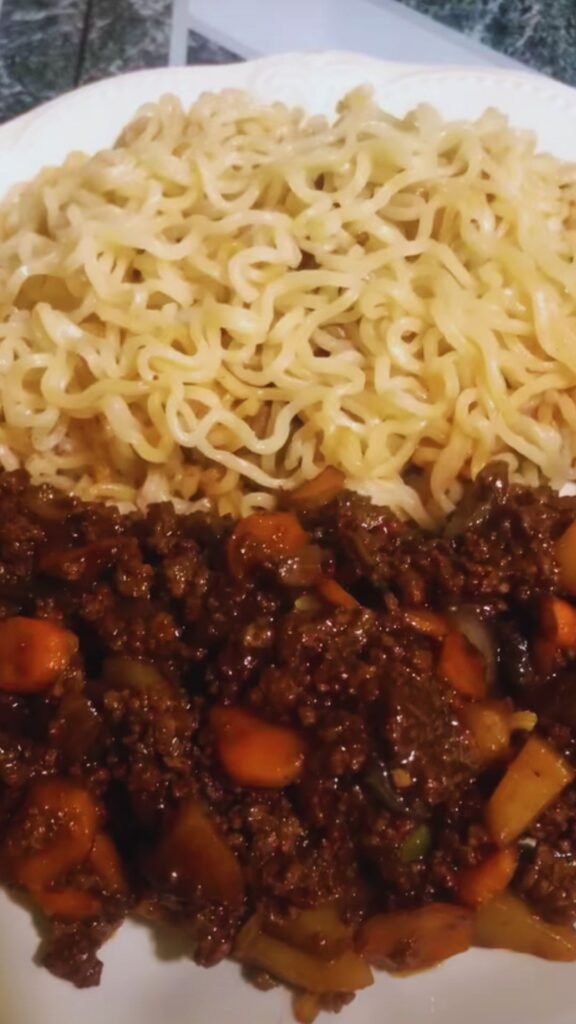
After making this recipe dozens of times, I’ve developed some favorite variations that completely transform the dish while keeping its quick and easy foundation:
Spicy Korean-Inspired:
- Add 2 tablespoons of gochujang (Korean chili paste) to the sauce
- Include thinly sliced shiitake mushrooms
- Top with kimchi and a fried egg
Thai-Inspired:
- Swap the sauce for 2 tablespoons red curry paste mixed with 1/2 cup coconut milk
- Add a tablespoon of fish sauce and lime juice
- Garnish with Thai basil and crushed peanuts
Chinese Takeout Style:
- Add 1/4 cup hoisin sauce to the basic sauce
- Include water chestnuts and bamboo shoots
- Garnish with crispy wonton strips
Vegetable-Forward Version:
- Double all the vegetables
- Use only half the amount of beef (or substitute with tofu)
- Add in colorful vegetables like purple cabbage and yellow squash
Serving Suggestions
This stir fry is a complete meal on its own, but here are my favorite ways to round out the meal:
- Serve with a simple side salad dressed with rice vinegar and sesame oil
- Offer cucumber slices tossed with a little salt and rice vinegar
- Provide small bowls of additional garnishes for everyone to customize their portions
- For larger appetites, serve with a side of steamed dumplings
- Accompany with miso soup for a Japanese-inspired meal

Common Questions and Answers
Over the years, I’ve received many questions about this recipe. Here are the most common ones with my thorough answers:
Q: Can I make this recipe gluten-free? Absolutely! Use tamari instead of soy sauce, ensure your oyster sauce is gluten-free (or substitute with a gluten-free hoisin), and choose rice noodles or other gluten-free noodles. Double-check all condiment labels as some may contain hidden gluten.
Q: How can I make this recipe less salty? If you’re watching your sodium intake, use low-sodium soy sauce, reduce the amount by half, and increase the other sauce components slightly. You can also add a bit more water or broth to dilute the saltiness while maintaining flavor.
Q: My sauce isn’t thickening properly. What am I doing wrong? The most common issue is not mixing the cornstarch thoroughly with the liquid ingredients before adding to the hot pan. Make sure it’s completely dissolved in your sauce mixture. Another possibility is that your heat isn’t high enough – the sauce needs to nearly boil to activate the cornstarch’s thickening properties.
Q: Can I prepare this ahead for a dinner party? Yes! Prep all components separately: cook the beef, prepare the vegetables, mix the sauce, and cook the noodles. Refrigerate everything separately and then combine and heat through just before serving. This approach actually works beautifully for entertaining.
Q: My vegetables always turn out too soft. How can I keep them crisp? The secret is high heat and quick cooking. Add harder vegetables first, then more delicate ones. Also, slightly undercook them initially as they’ll continue cooking when you add the sauce and combine everything.
Q: Is there a way to make this recipe vegetarian/vegan? Definitely! Substitute the ground beef with crumbled extra-firm tofu, tempeh, or a plant-based ground meat alternative. For the sauce, replace the oyster sauce with vegetarian “oyster” sauce (usually made from mushrooms) or additional hoisin sauce, and use vegetable broth instead of beef broth.
Q: My family doesn’t like spicy food. How can I adapt this? Simply omit the red pepper flakes from the sauce and focus on the other flavors. You can increase the ginger slightly for a different kind of warmth, or add a bit more brown sugar for a sweeter profile that kids often enjoy.
Q: Can I use other types of meat? Absolutely! While ground beef gives a rich flavor, this recipe works beautifully with ground turkey, chicken, or pork. You can even use thinly sliced steak if you prefer larger pieces of meat – just adjust the cooking time accordingly (slice steak will cook much faster than ground meat).
Why This Recipe Became My Weeknight Staple
I still remember the first time I made this stir fry. It was one of those chaotic weeknights – I was running late from work, the kids had homework questions, and I had exactly 30 minutes to get dinner on the table before everyone needed to rush off to evening activities. I grabbed what I had in the fridge, tossed it together with some basic Asian condiments from my pantry, and hoped for the best.
To my surprise, my family raved about it. My youngest, who typically pushes vegetables around her plate, cleaned her bowl. My partner, who usually reaches for hot sauce to “improve” my cooking, didn’t even ask for it. And I found myself going back for seconds, appreciating how the flavors had come together so effortlessly.
Since then, this recipe has evolved through countless iterations, but its heart remains the same: a quick, adaptable, delicious meal that brings everyone to the table with smiles. I hope it becomes a treasured recipe in your home too.
Whether you’re cooking for a family of picky eaters, meal prepping for a busy week ahead, or simply looking to expand your weeknight dinner rotation, this Ground Beef Noodle Stir Fry deserves a spot in your recipe collection. Its flexibility, nutrition, and incredible flavor profile make it a dish you’ll return to again and again.
Q&A Section
Q: What’s the best type of noodle to use in this stir fry? While I personally prefer rice noodles for their ability to absorb sauce without becoming mushy, this recipe is incredibly forgiving. Egg noodles give a more traditional Chinese feel, while regular spaghetti or linguine work surprisingly well if that’s what you have on hand. The key is to cook them a minute or two shy of the package directions since they’ll continue cooking when added to the stir fry.
Q: How can I meal prep this for busy weekdays? This is one of my favorite meal prep recipes! Prepare the sauce and store it in a jar in the refrigerator (it keeps for up to a week). Chop all your vegetables and store them in an airtight container. You can even pre-cook the ground beef and refrigerate it for up to 3 days. When ready to make dinner, cook your noodles fresh, then toss everything together in a hot pan – dinner will be ready in under 15 minutes.
Q: My kids don’t like vegetables. How can I make this more kid-friendly? I’ve been there! Try chopping the vegetables very small so they blend in more with the meat and noodles. Carrots, which have natural sweetness, are usually more accepted by children. You can also try serving the stir fry “deconstructed” – plain noodles, seasoned beef, and vegetables separately on the plate – allowing kids to combine components as they wish. Over time, as they get used to the flavors, you can gradually serve it all combined.
Q: Is there a way to reduce the carbs in this recipe? Absolutely! For a lower-carb version, substitute the noodles with spiralized zucchini or shirataki noodles. You can also increase the proportion of vegetables to noodles, using just a small amount of noodles more as a garnish than a base. Another option is to serve the beef and vegetable mixture over cauliflower rice instead of noodles.
Q: What’s the difference between this recipe and traditional Asian stir fries? While this recipe draws inspiration from various Asian cuisines, it’s intentionally been adapted for Western home kitchens and ingredients. Traditional Chinese or Thai stir fries might use higher heat, specialized wok techniques, and ingredients that might be harder to find in typical American supermarkets. This version uses familiar ingredients while still capturing the essence of those wonderful flavors and techniques.
